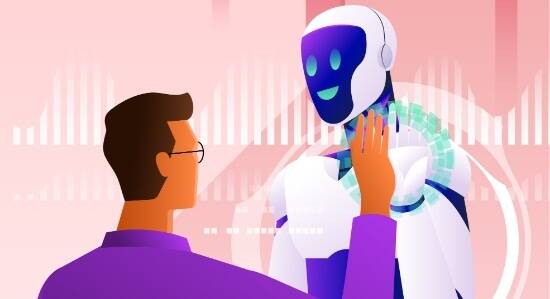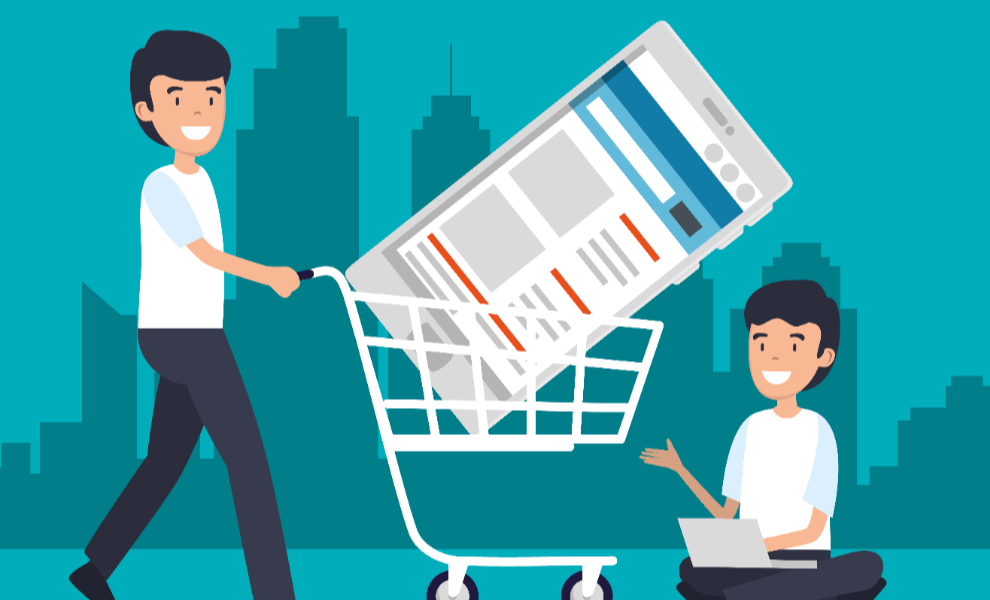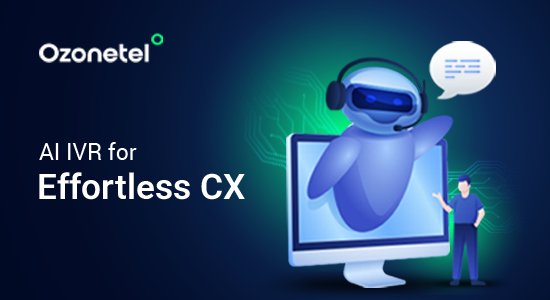- Resources
- 11 Types of Customer Needs You Must Meet to Succeed
11 Types of Customer Needs You Must Meet to Succeed

Here’s a tough question not every company knows the answer to: What do your customers want? Better yet, what do they need? While you surely need their business, what they’re expecting from the seller-consumer relationship can be any number of things. In this article, we’ll explore the concept of customer needs, the types that exist, and how you can leverage them to drive sales and satisfaction in your organization.
What are Customer Needs?
Customer needs are the psychological and tangible expectations consumers have in mind when looking to pay for a product or service. They can be thought of as the driving factor behind the buy; essentially the reason why a customer decides to purchase something.
Beyond the expectations consumers have before buying, customer needs can also encompass the experience they expect after making a purchase, such as quality assurance from companies offering services like warranties, providing helpful documentation or even providing good customer service and support when needed. This plays into the concept of customer retention, which focuses on creating strong relationships that keep buyers coming back.
Why Some Customers’ Needs Are Different Than Others
While everyone has an innate need to be satisfied, the nature of what satisfies them varies. For instance, people who are looking for a luxury item may be more likely to focus on the brand name in order to ensure quality and prestige, while those looking for basic items may prioritize affordability over quality.
Let’s take a closer look at some of the determining factors behind different customer needs:
Demographics
Different demographic groups have different buying habits and expectations when it comes to purchases. Age, gender, marital status, and income level are all examples of ways in which customers can be segmented. Companies should be able to identify these segments and tailor their services accordingly.
Psychographics
Studying the psychological factors behind why people buy what they do can also be very beneficial in understanding customer needs. This includes learning about customer personalities, goals, values, and lifestyle. By getting to know customers on a deeper level, companies can better cater their services and create a customer experience that is more personalized than ever before.
Life Stage
Customers’ life stages play a major role in how they shop as well. Whether they are just starting out or have been married for decades with children, customers will look for different products depending on where they are in life. Companies should be aware of these changes and how to appeal to each unique customer group at any given time.
Geographics
People all over the world shop differently depending on where they live. Different locations will have different needs and expectations, and companies should be able to adjust their online stores accordingly. For example, customers in a colder climate may need more winter-related items than those in warmer climates or vice versa.
How Customer Needs Can Change Over Time
As if the breadth of reasons why people want what they do wasn’t enough, it’s also worth highlighting the fact that customer needs evolve over time. How? Consumers become more informed as they learn about different products or services, and the way that businesses communicate with them can also prompt new desires.
For example, let’s say a customer purchased an item from your business 10 years ago. The features that product had may have been impressive at the time, but today there are far better options available on the market – meaning those older offerings don’t align with what customers need today.
Technology plays a huge role in customer needs. As new platforms, apps and devices come out, customers start to expect more from the businesses they shop with. For instance, if a business doesn’t have an app or mobile-friendly website then it’s likely that customers will go elsewhere, as they’ll want a user experience that isn’t hampered by outdated technology.
It’s also important to remember that people’s preferences for how they purchase something can change over time too. Customers may initially prefer shopping in-store, but then as time goes on they may switch to online shopping for convenience. It’s therefore essential for businesses to keep up with the changing needs of customers – otherwise, they risk becoming disconnected and out of touch.
Understanding Customer Needs Can Be Used to Your Advantage

Why take the time to learn about customer needs, you may ask? It’s simple: fulfillment and satisfaction are key to success. People like buying things from companies that have their best interests in mind and that can provide the products or services they need without frustration or disappointment. Knowing needs is the first step to fulfilling them.
Customer Needs Inform Product Development
Customer needs are a key factor in product development. Companies need to research and understand what their target market is looking for before investing in new offerings. In some cases, this could mean launching surveys or focus groups and having direct conversations with customers to figure out what they need. Knowing customer needs can also help companies decide which products or services they should focus on, as well as identify areas where there is an opportunity for growth.
For example, BigBasket ensures rigorous quality control measures across its supply chain. From sourcing to storage and delivery, the company implements stringent quality checks to uphold the freshness and integrity of its items. Prioritizing the fundamental customer need for high-quality products, BigBasket has successfully transformed online grocery shopping into a reliable and satisfying experience. Read More
Customer Needs are an Invaluable Marketing Tool
Today’s business landscape is competitive, to say the least. Markets are full of businesses with something to offer, all vying for customers’ attention. This makes it crucial for companies to differentiate themselves from their competitors and capitalize on the opportunities in front of them. Understanding customer needs is an invaluable tool that can help businesses do just that.
A good understanding of customer needs makes it easier for companies to create targeted marketing campaigns aimed at specific audiences who are interested in what they have to offer. By studying customer behavior, businesses can identify the problems customers are experiencing and craft campaigns designed to show how their products or services address those issues.
Knowledge of Customer Needs Gives You a Competitive Edge
With modern technology – particularly online shopping platforms – companies are able to gather more data on what drives people’s purchasing decisions than ever before. This makes being aware of changing trends in consumer behavior incredibly important from a business perspective.
The online world gives us insight into what consumers are looking for, what their needs and wants are, and how they like to shop. Companies that don’t take advantage of the plethora of data available from online purchases risk falling behind competitors who use this information to their advantage. For example, say a company sells shoes and has access to customer purchase history. With this data, the company can focus on providing more of what customers are looking for – rather than guessing what might be popular – in order to stay ahead of competitors.
Customer Needs are an Important Part of Customer Retention
The type of post-sale customer experience you provide can have a big impact on your bottom line; it’s an important factor in customer retention and loyalty. Forbes reports that loyal customers are five times more likely to repurchase from the same vendor, and four times more likely to refer their product or service to a friend. Taking the time to understand what customers need and delivering on those needs is essential for long-term growth.
11 Types of Customer Needs
Customer needs can be broken down into two distinct categories: product and service. These are the main vessels through which businesses deliver value to consumers. Within each group are eleven key types of needs that satisfy different aspects of human behavior. Read below to see a breakdown of the most important kinds of customer product and service needs today.
1. Function
Consumers seek out products or services that solve a given challenge or provide them with utility. It’s a simple problem/solution dynamic, where the company that offers the best-working solution will often take the sale.
For example, a consumer may purchase a coffee maker for the utilitarian purpose of quickly producing hot beverages with minimal effort.
2. Control
People don’t like feeling powerless, so they will often look to purchase something that gives them some level of control. This could be a product or service that provides long-term stability such as an insurance policy, or something that makes them feel as if they are in control of their own destiny such as a retirement plan.
When it comes to tangible items, the desire for control often manifests in ‘extra’ – more space, additional storage, added features, etc. This gives buyers the comfort of knowing the product or service they’ve paid for won’t get in the way, but rather help them live life on their terms.
3. Status/Social
People like to be associated with certain brands or products that give them a sense of pride, belonging, and even envy from those around them. It’s not just about being seen with the most current tech gadget, but having the right label on a handbag or necklace that elevates them to the level of sophistication and cool.
The need for status is often driven by fear of missing out (FOMO) or concern with how they are perceived by others. Some brands’ entire business model is built upon this very concept of exclusivity and status, with no intentions to provide any more value than just a ‘name’.
4. Durability/Longevity
When a customer buys something, they often expect it to last. Durability and longevity are two different ways of expressing the same idea: how long can this product or service be expected to remain functional? If a company can promise long-term reliability without requiring significant maintenance or repair, it will likely be favored by consumers who value dependability.
For instance, a refrigerator that is built to last for decades without the need for repairs will be seen as a more valuable purchase than one with poor build quality and a short lifespan.
5. Customization
Many customers today are seeking out products or services that can be tailored to meet their individual needs. Customization not only provides a unique experience but also guarantees that buyers will get exactly what they want from their purchase.
Lots of companies are hopping on the customization train in a bid to satisfy the public’s ever-growing desire for personal experiences. Shoenvious is a great example – they allow shoppers to design shoes from the bottom up, granting them complete control over their finished product.
6. Price/Economics
While we all want the best solution out there, money can sometimes be an overriding factor when making purchasing decisions.
Consumers often compare prices between different vendors and make their decisions based on the best value available. This could be a good price, discounts, or special offers that add extra savings for customers; whatever works.
For instance, a consumer might choose a basic smartphone over an expensive one because the former satisfies their needs and fits within their budget.
7. Performance
People are happiest when they get what they pay for. It goes hand-in-hand with the problem/solution dynamic. Consumers typically look for products and services that will perform reliably and efficiently, such as a washing machine with an A++ energy rating or a vehicle with the best fuel economy.
Having this assurance upfront helps to reduce buyer’s remorse and provides peace of mind in the long run.
8. Convenience
In a world of short attention spans and instant checkouts, people are particularly driven to seek out businesses that provide them with convenience. This can be from an experiential point of view, such as having an easy-to-navigate website, or from a practical perspective such as offering delivery services.
For example, a customer may opt to patronize an online grocery store rather than one in person due to its convenience.
9. Reliability
When seeking out a product or service, customers want to make sure they are getting something that is reliable and of good quality. They might take into account factors such as customer reviews, return policies, warranty coverage, and the brand’s reputation when making a purchasing decision.
One of India’s top stockbroking firms wanted a robust solution that could handle their inbound and outbound calls —efficiently, cost-effectively, and reliably. Every contact center solution the broking firm had tried invariably crashed under a load of fluctuating call volumes.
With Ozonetel’s unified CX platform, the firm could handle 40,000+ calls daily and up to 1340 calls concurrently. The broking firm now provides its customers with uninterrupted service and high First Contact Resolutions (FCR)
10. Transparency
Ethics are a major factor in today’s market – consumers now have the power of information and expect companies to remain honest.
They want vendors to be clear about their prices, terms of service, timeframes and any other relevant details when doing business. Meta’s recent push for greater transparency around data privacy is a good example of this.
11. Customer Service
Above all else, customers appreciate good customer service that is timely and helpful. From the point of view of a consumer, nothing is more frustrating than getting stuck with an issue and not having anyone available to address it.
Businesses that prioritize their customer service are more likely to have a larger base of happy customers who keep coming back for more.
Acko, a prominent insuretech firm in India, leverages Ozonetel CCaaS for superior customer service. Using an intelligent IVR system, Acko predicts the nature of incoming calls, enabling customers to swiftly handle tasks like policy endorsements and changes independently. Integration with Freshdesk provides agents with relevant information, resulting in faster responses and an overall improved customer experience.
How to Identify Customer Needs
Identifying customer needs is a crucial step in the process of providing quality customer service.
Businesses must be able to recognize the behaviors and feedback of their customers so they know how to best serve them. We provide a few tips for doing so below.
Leverage Existing Data
The first step in understanding customer needs is to leverage data. This includes both general information about customers as well as individual feedback from surveys, online reviews, and other sources.
By examining this data it becomes much easier to identify common issues and desires that customers have and create solutions that address them head-on.
Listen to Feedback
Sometimes, the best way to find out what someone wants is to ask them yourself. That’s especially true when it comes to customer needs analysis; companies have long used surveys, feedback forms, and working groups as first-hand sources of information for their business experience and satisfaction strategies.
Listening to customer feedback and suggestions is an invaluable way for businesses to stay up-to-date on their customers’ needs and wants.
Addressing Customer Needs Head-On
The work put into the research process explained above is only worthwhile if insight is turned into action. It’s one thing to know what your customers’ needs are, and another to actually fulfill them. This next section will walk you through some best practices and strategies that can be used to generate results from customer needs analysis.
Build Feedback Loops
Feedback loops are a great way to ensure that customers’ needs and wants are continually heard, understood, and acted upon. Setting up an efficient feedback loop system will help you stay in contact with your customers on a regular basis and get their input whenever necessary.
Create Custom Solutions for Your Customers
Rather than relying on generic solutions that may not be the best fit for your customers’ needs, take the time to get to know them and create custom solutions tailored specifically to their individual needs. You want your customers to feel as if you understand their wants and needs, and that you are taking the initiative to provide them with a unique experience.
Invest In Customer Service
If there’s one thing that every company can do to bolster customer happiness, it’s provide great service. Regardless of the industry or product at hand, people will always expect respect from the companies they do business with.
Someone may be reaching out regarding their need for a product, or to provide input on how well the item they purchased works. They may have a complaint, question, or problem in need of solving. Whatever the case, everyone comes to the table with the same set of expectations – and that’s to be treated with respect, patience, and dignity.
In Conclusion
Anticipating & effectively addressing common customer needs is essential for any business to succeed. By understanding the needs of your customers, you can provide them with the products and services they require, which in turn can lead to increased customer satisfaction and loyalty.
Effectively fulfilling – or better yet, exceeding – starts with the technology you use to communicate. Ozonetel’s unified CX platform allows you to provide customers with personalized, omnichannel interactions that foster a sense of understanding and trust while creating positive outcomes. With our advanced tools in place, your business can provide a seamless customer experience beyond what people expect. Reach out today to learn more about what we can do for you.
Want to see what Ozonetel can do for your company? Sign up today for a free 21-day trial.
Frequently Asked Questions
Customers have four primary needs when making purchasing decisions. Customers seek a quality product, efficient service, reasonable pricing, and a positive overall experience.
The customer needs process involves identifying customer needs, analyzing them, and then developing products or services that meet those needs. This ensures that products or services are developed and delivered in a way that aligns with and fulfills customer expectations.
Customer needs are essential elements that are crucial for satisfaction, such as the functionality of a smartphone. Wants are desires that enhance satisfaction, like a sleek design or additional features that go beyond basic functionality.
Identifying client needs involves actively listening to their concerns, asking insightful questions to deeply understand requirements, and analyzing feedback. You can use several methods such as customer feedback, customer journey mapping, social media listening, and input from service teams This comprehensive approach helps businesses understand customer expectations, preferences, and challenges more effectively.
Prashanth Kancherla
Chief Operating Officer, Ozonetel Communications
Over the past decade, Prashanth has worked with 3000+ customer experience and contact center leaders...
Chief Operating Officer, Ozonetel Communications
Over the past decade, Prashanth has worked with 3000+ customer experience and contact center leaders to comprehensively understand the need for effective and efficient customer communications at every step of their journey with a brand. Deeply embedded in today’s CCaaS ecosystem, he has been instrumental in Ozonetel's growth and contributed in various roles including product management, sales, and solution architecture.







